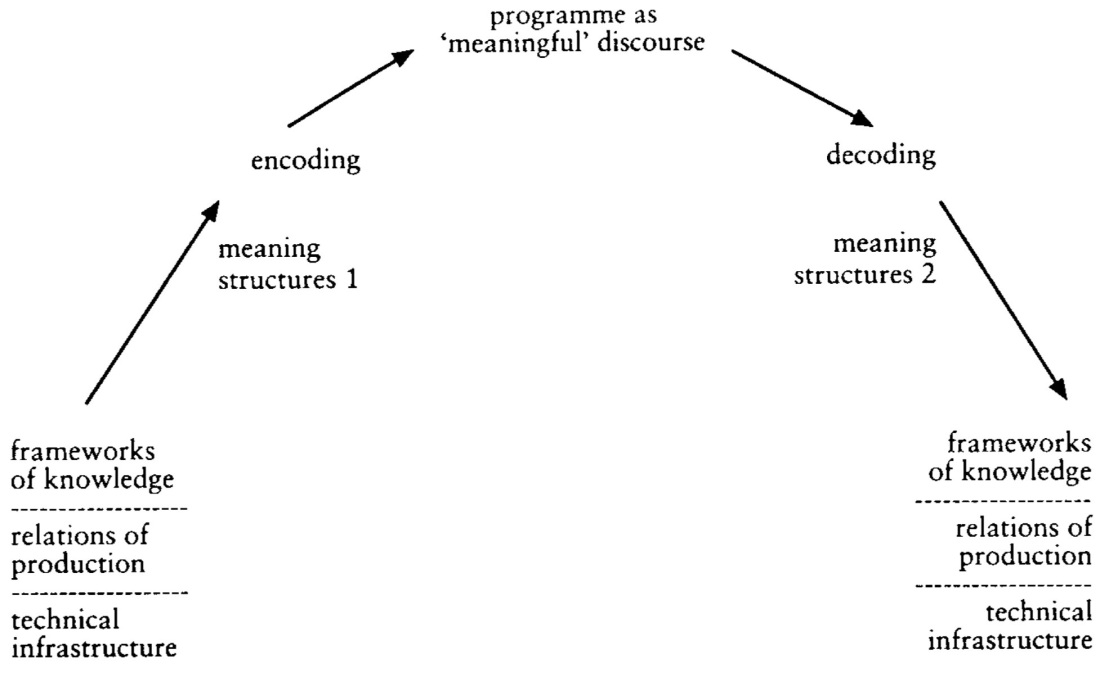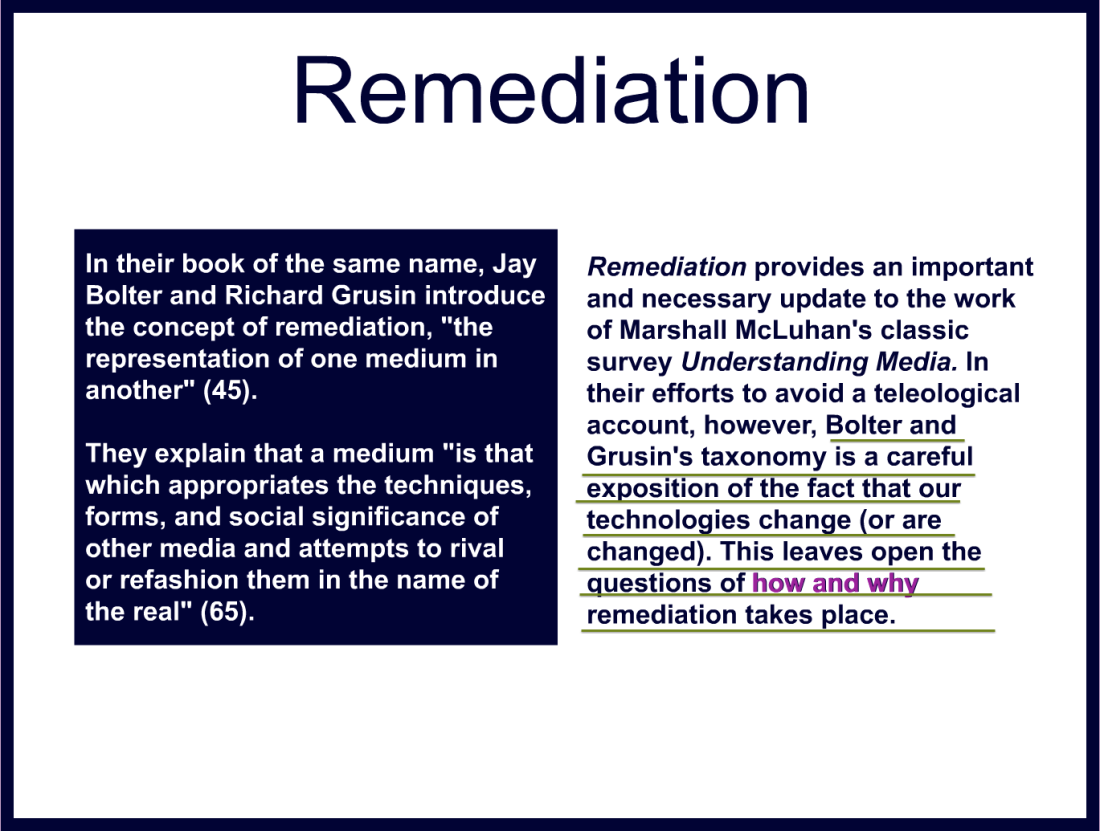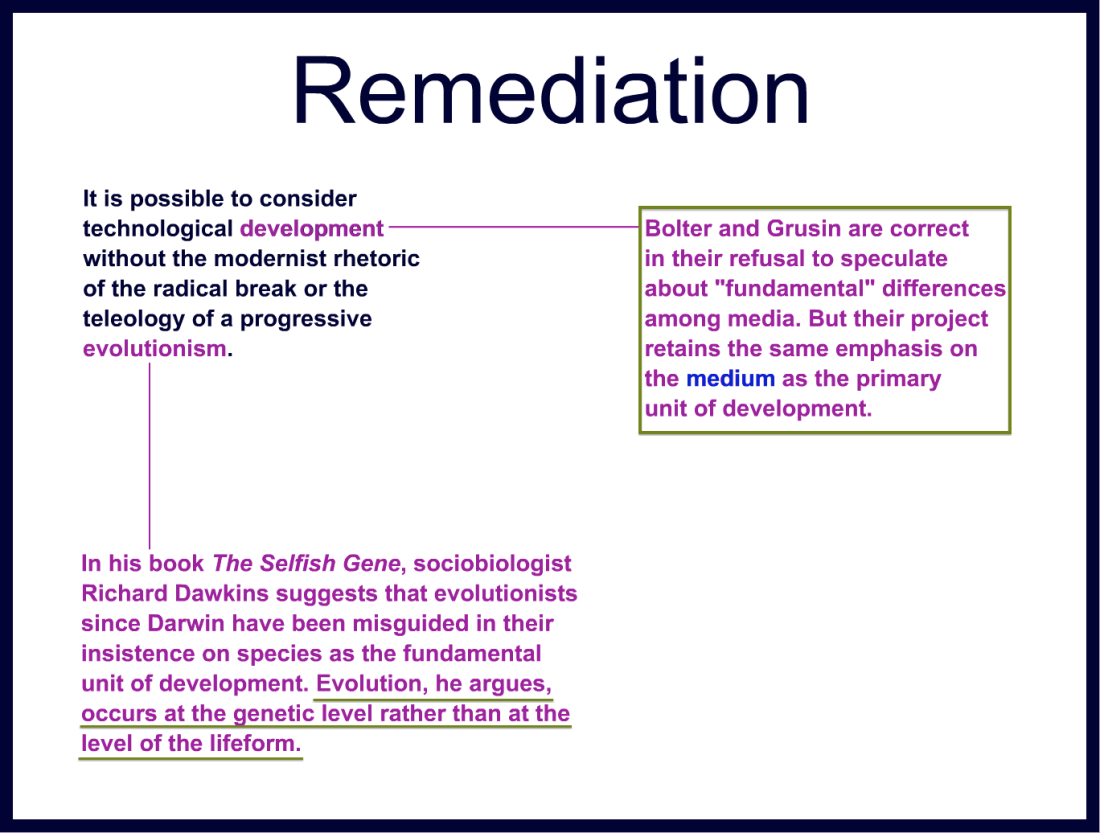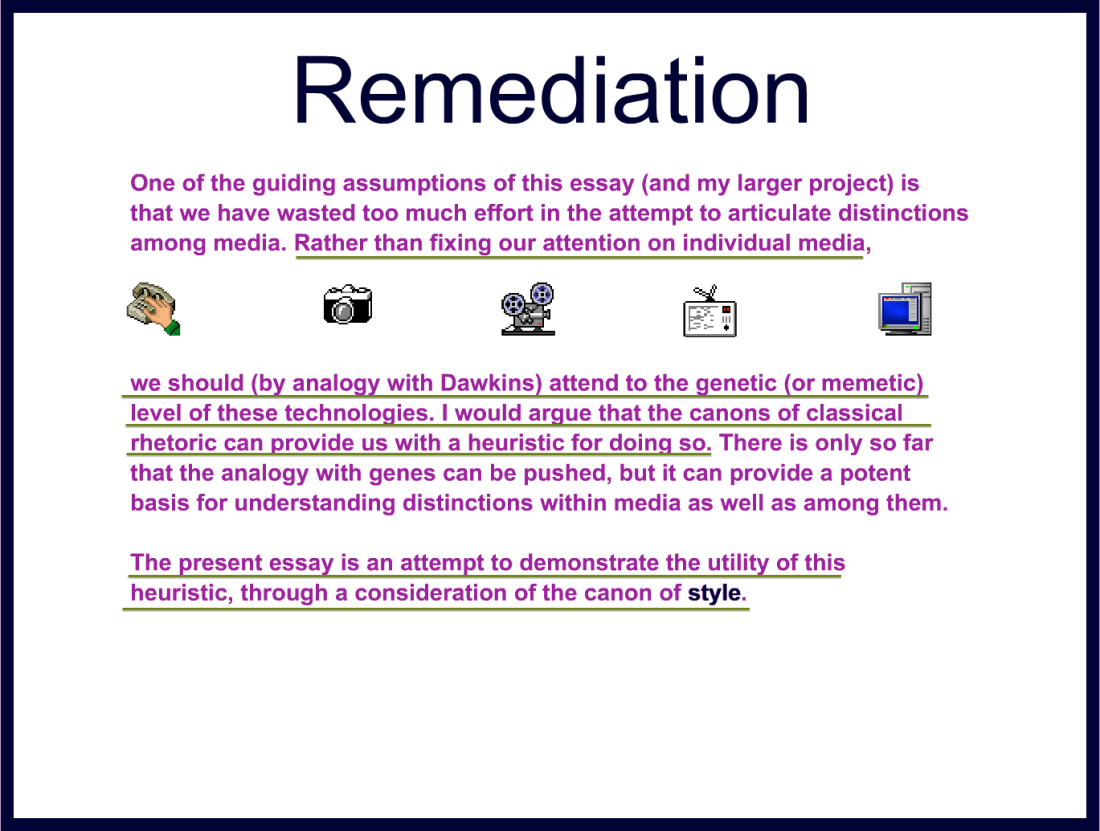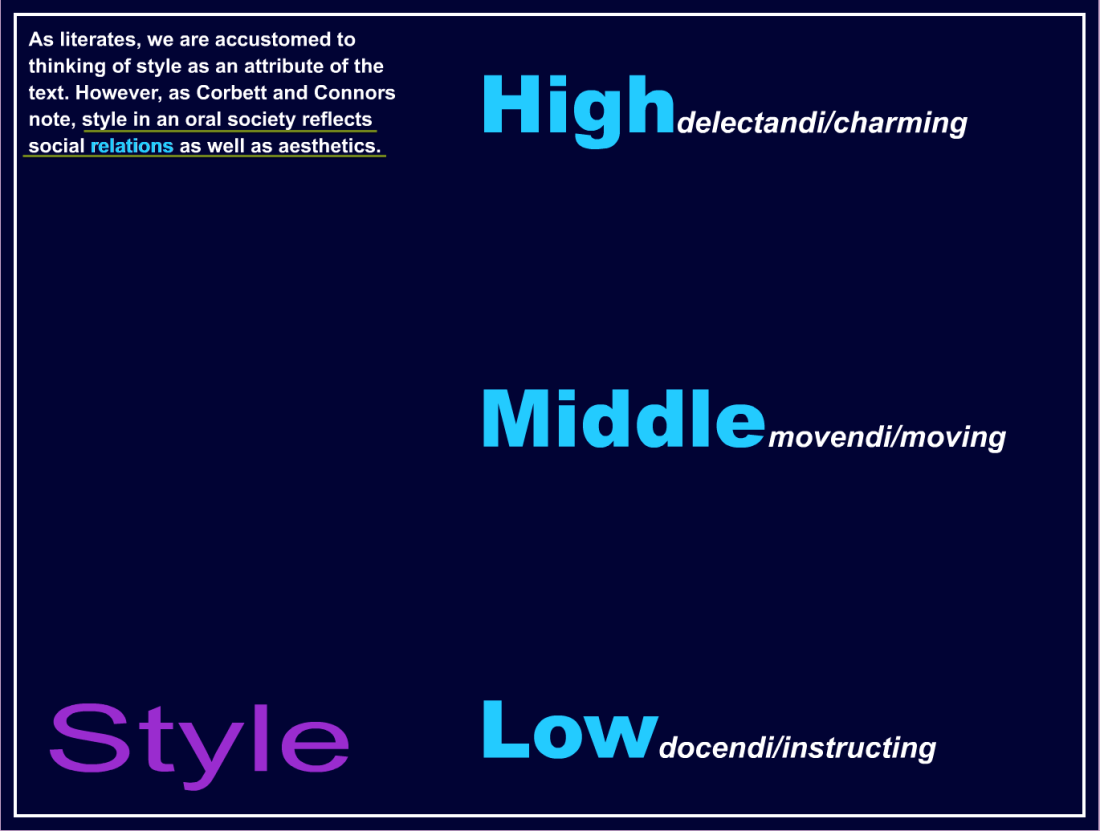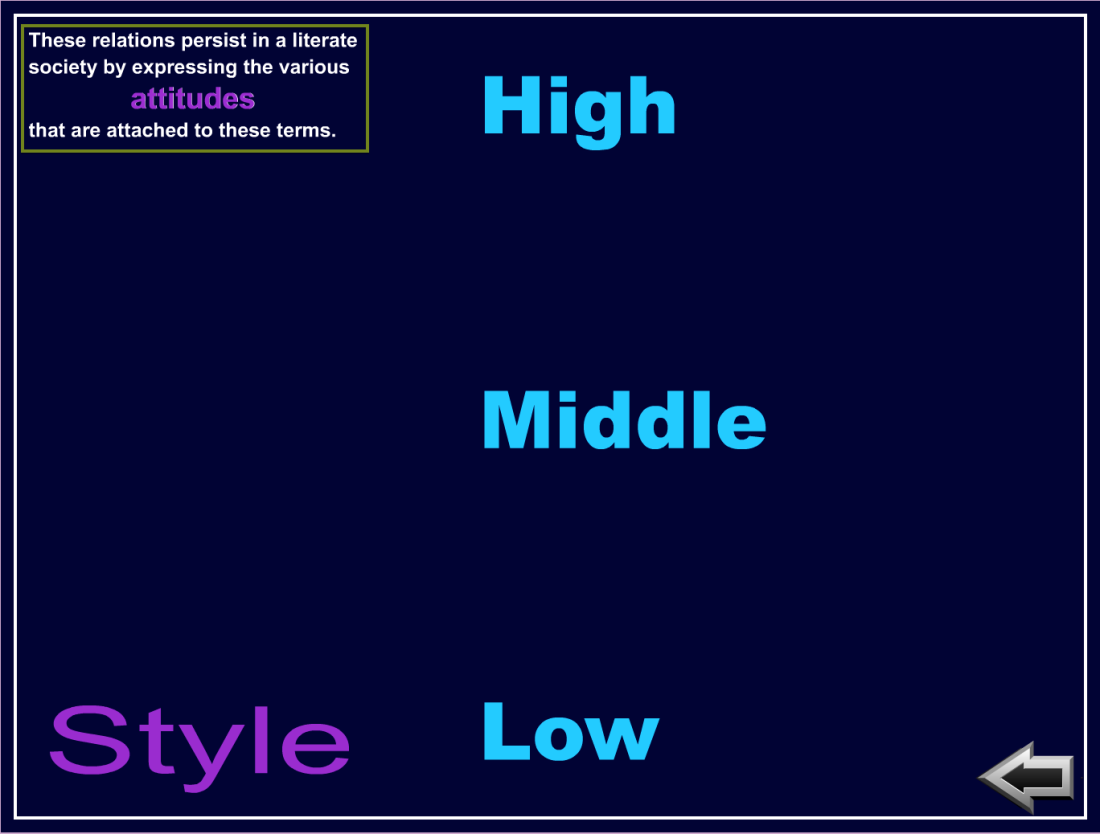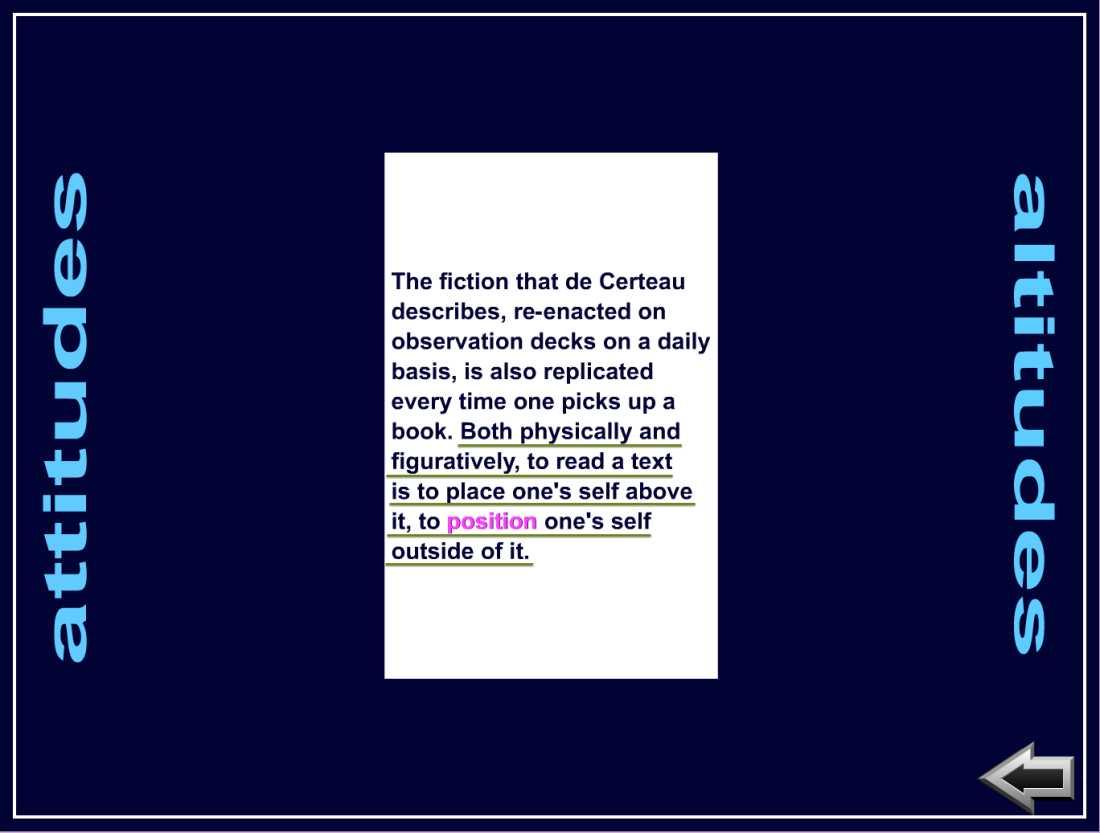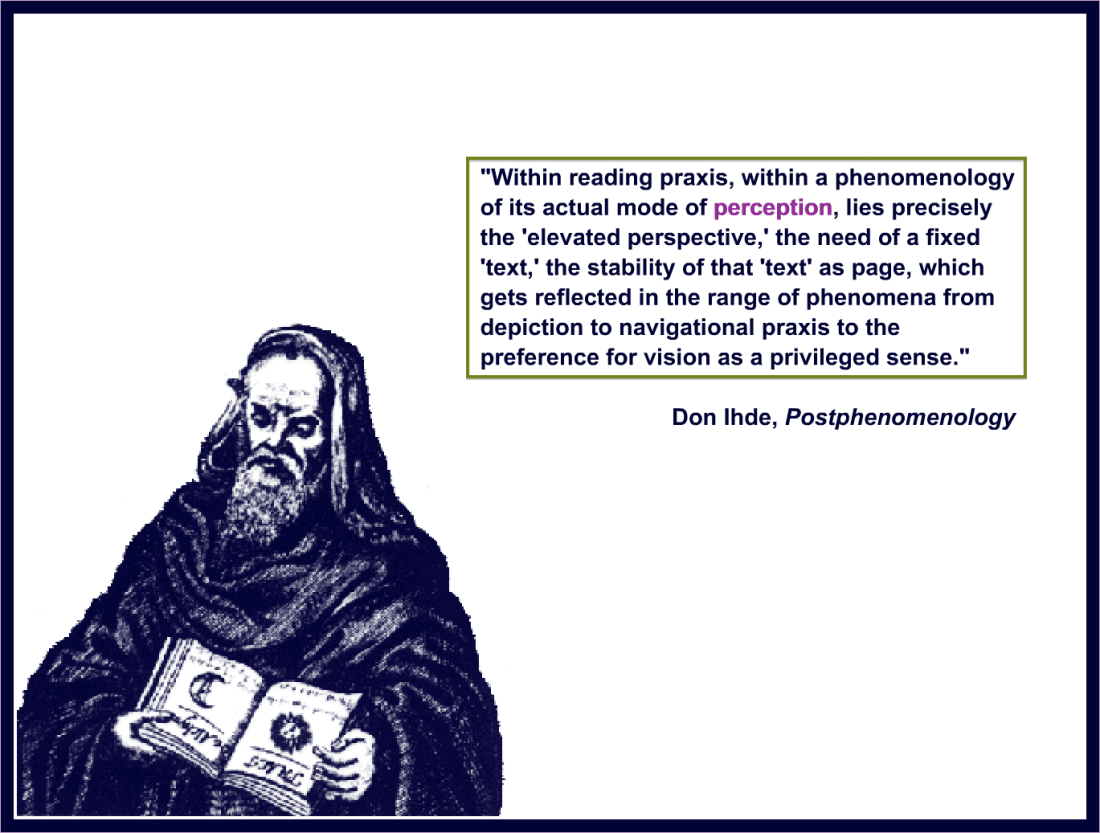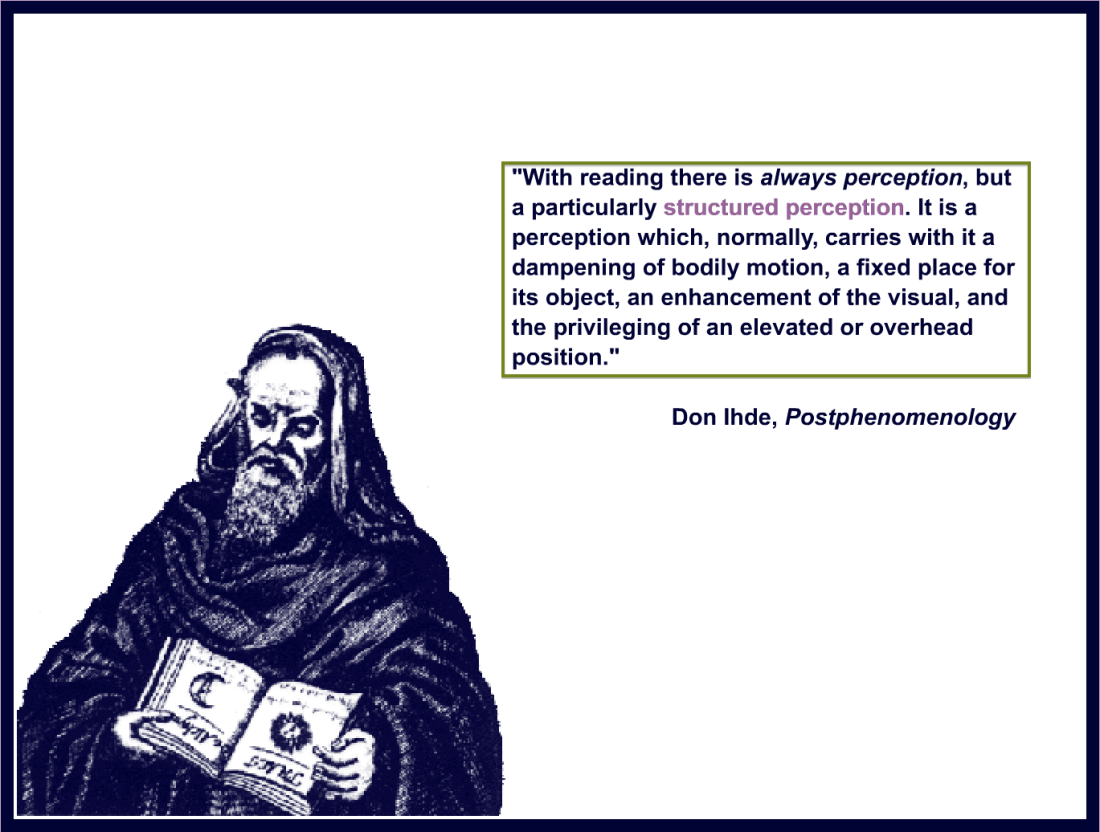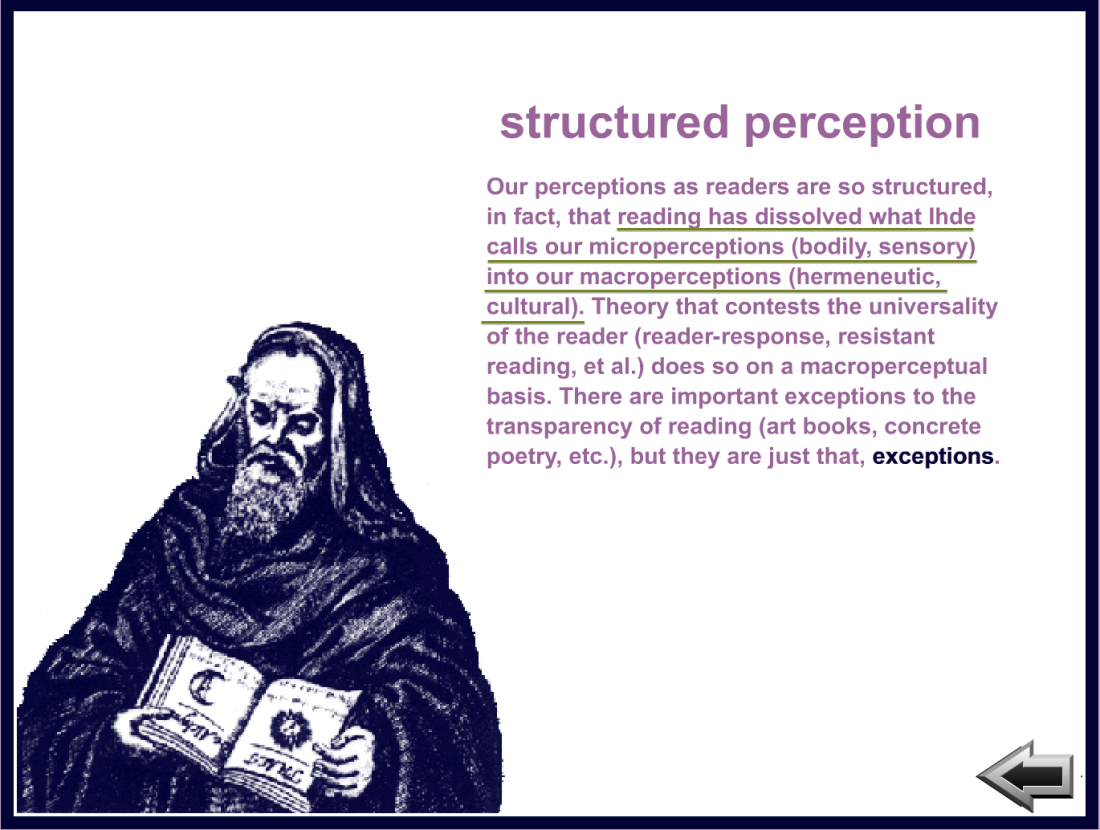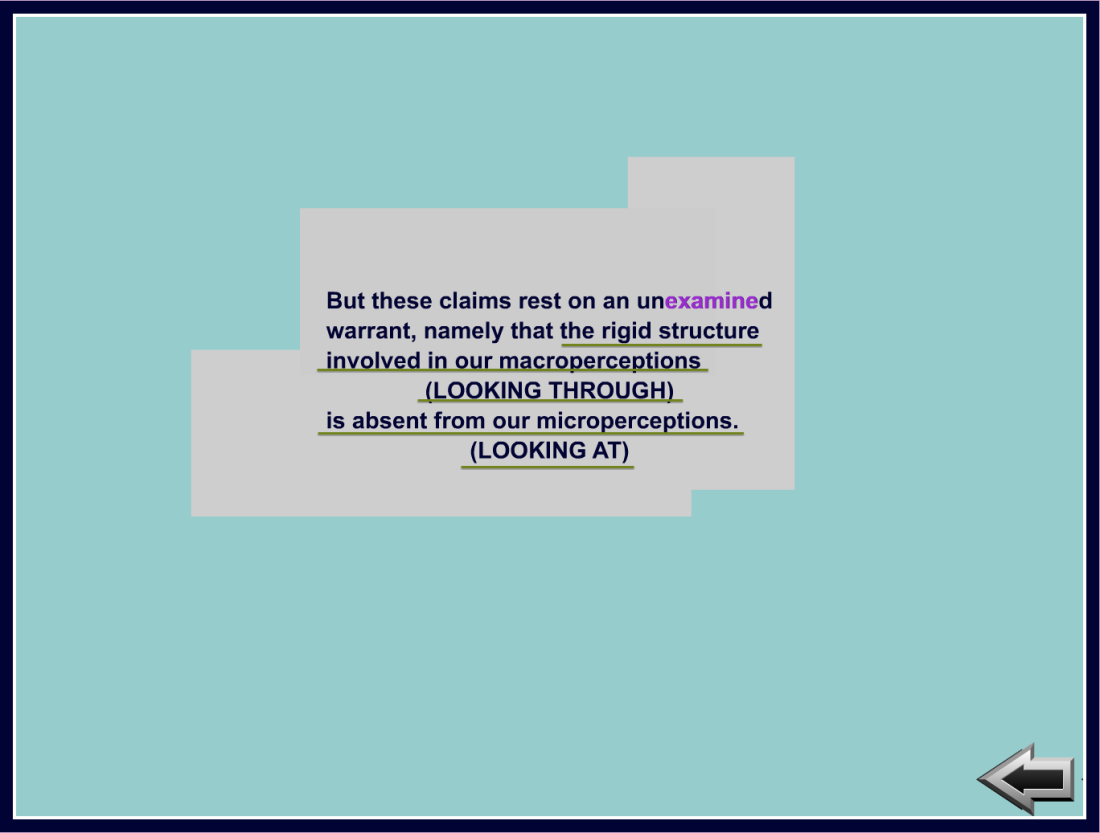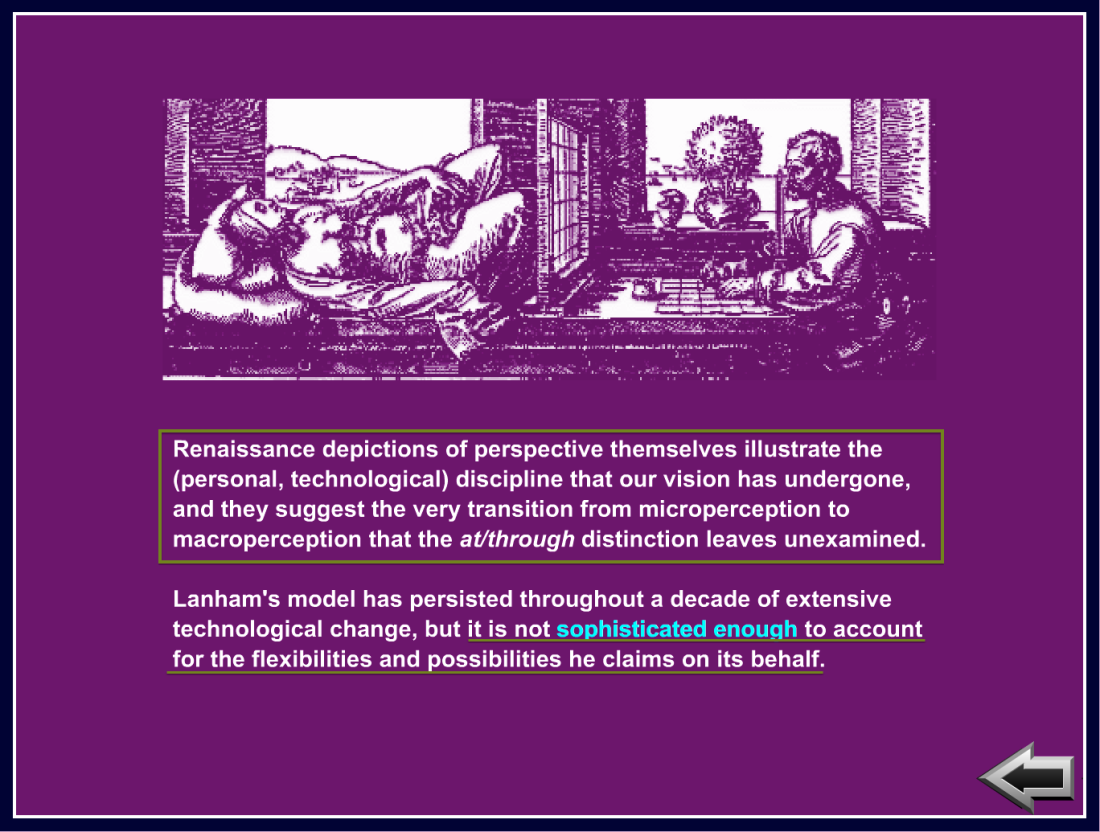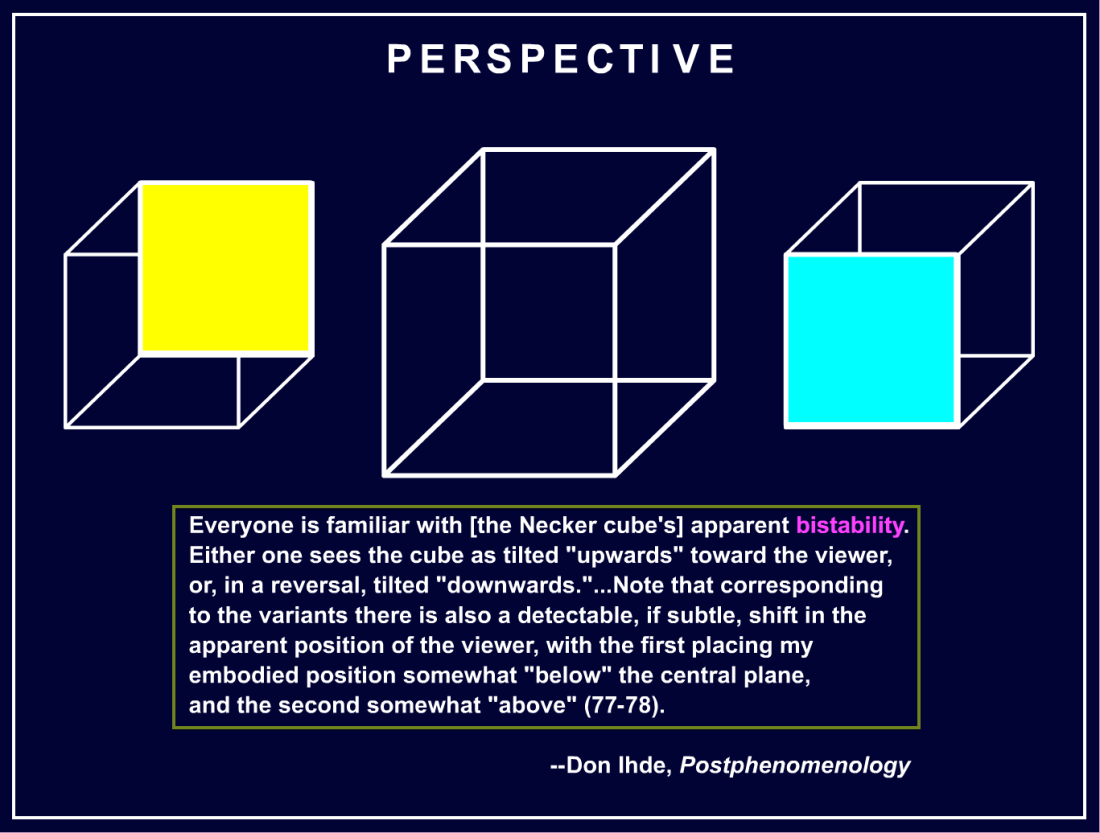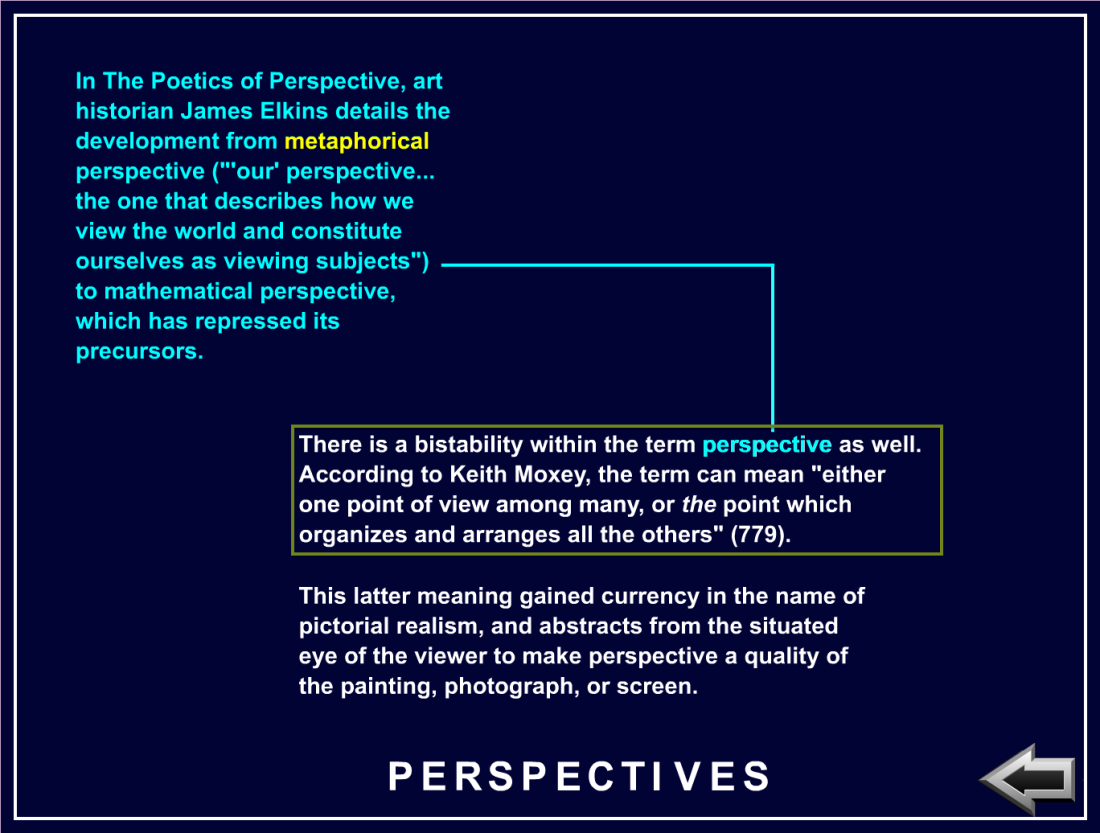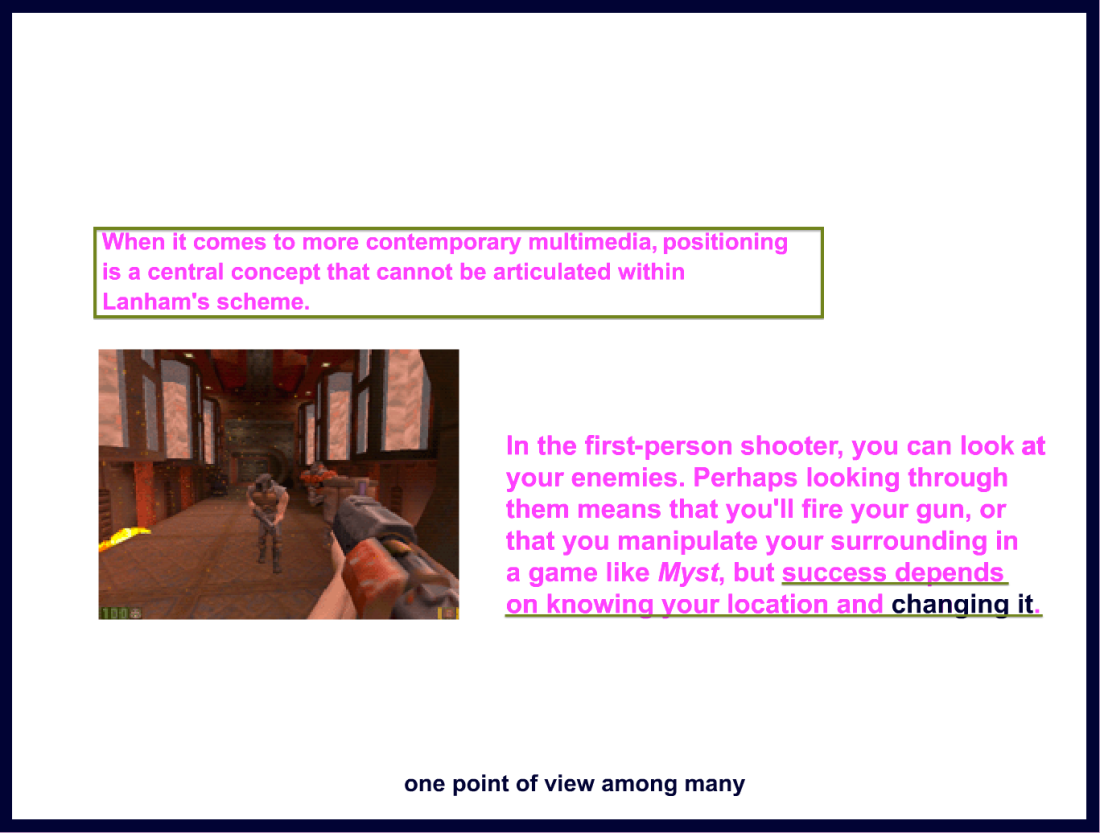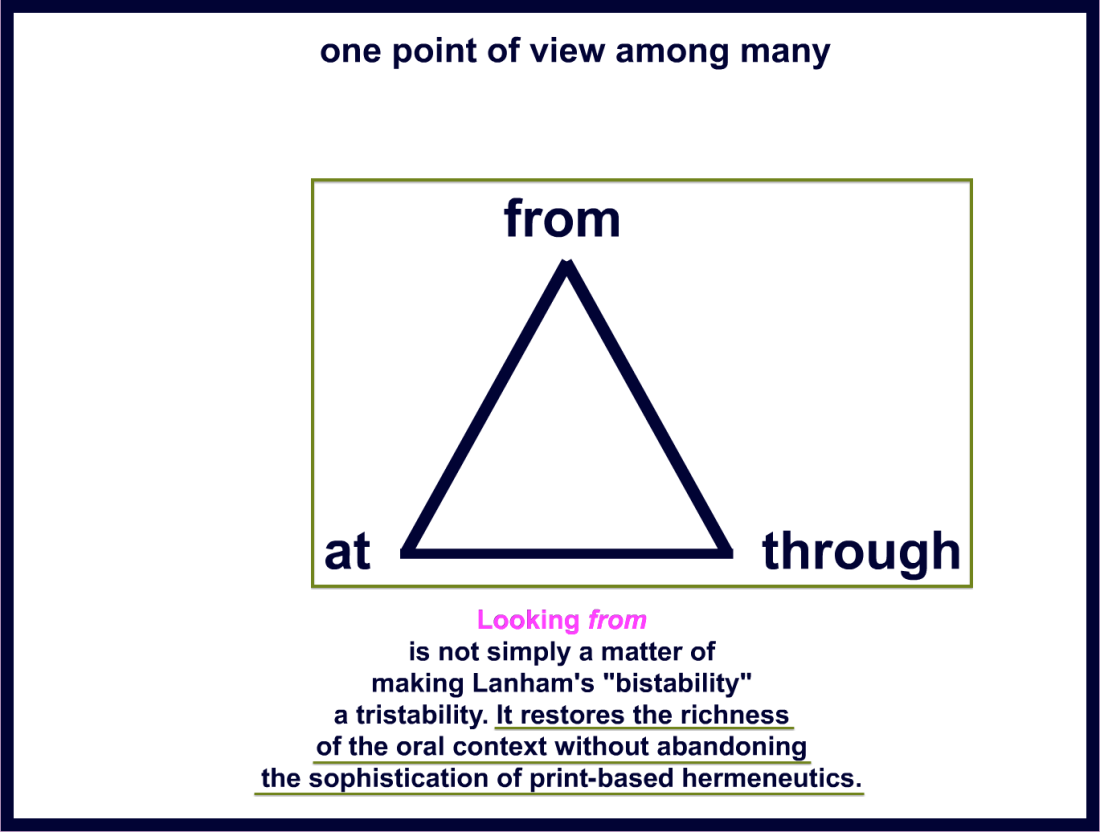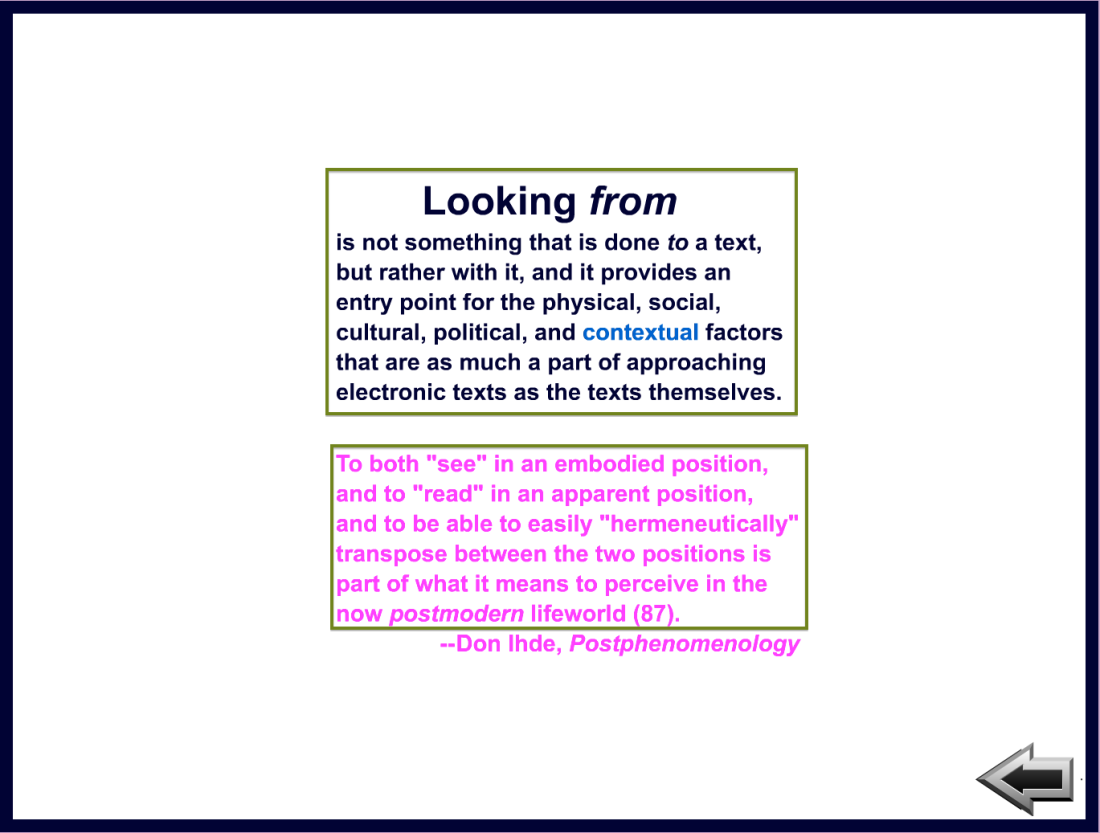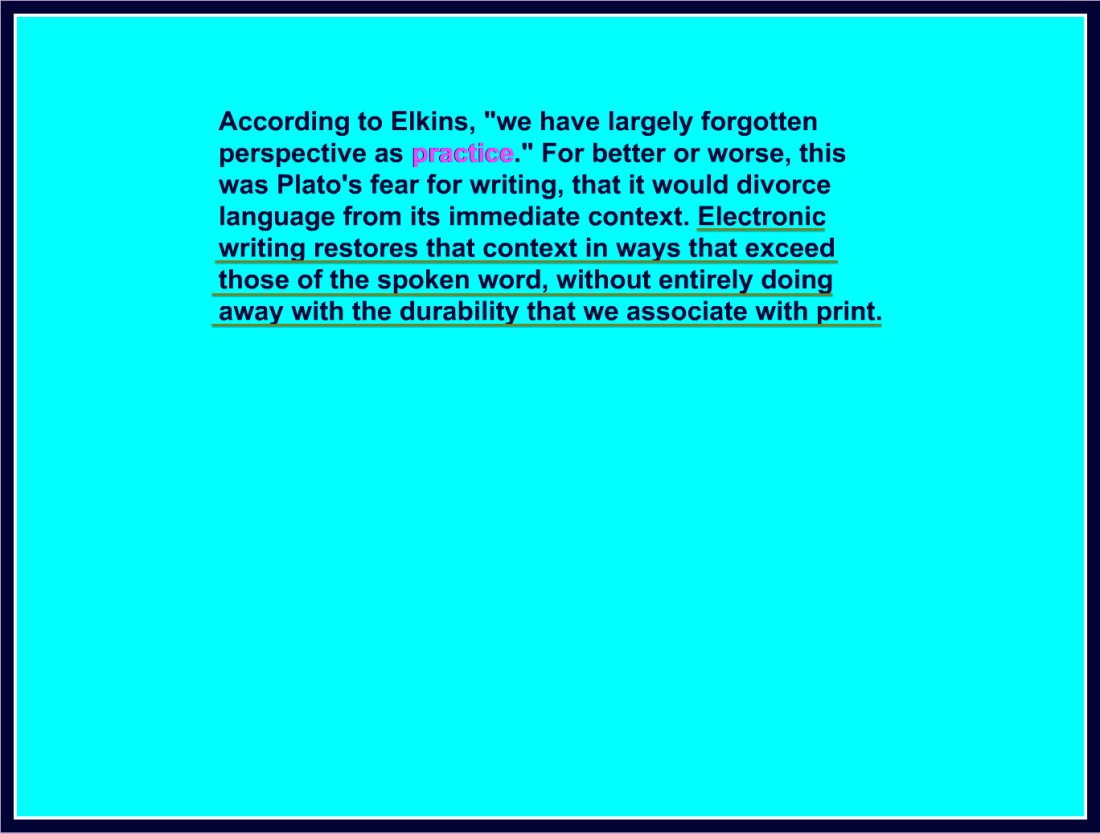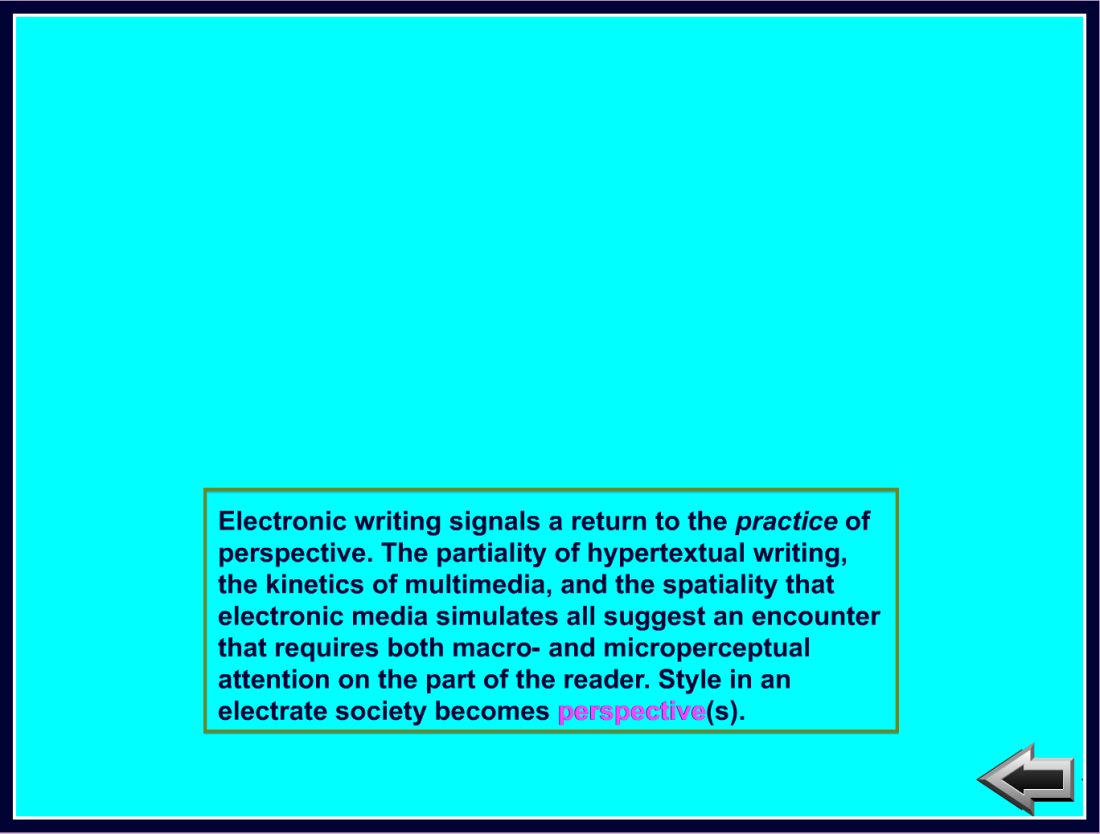I wanted to make sure I collected my quotes from this text close to the Lanham text as well. While DeVoss and Porter don’t directly engage in Lanham the way Brooke does, there is still a relationship here that needs to be traced. Many of the copyright and intellectual property issues DeVoss and Porter navigate here speak directly to the predictions made by Lanham. Lanham saw that a print-based model for copyright would prove insufficient and problematic for digital texts and called for reconceiving our systems to account for this; DeVoss and Porter echo this call and offer a model for understanding the ethics of distribution based on networking, particularly P2P networks.
Also, this echoes Trimbur and his work on the circulation of writing based on a Marxist model of circulation.
Notes:
“Rather, the Napster crisis represents a profound cultural shift. Napster matters because it signals a new ‘digital ethic’ of text use and file distribution that runs counter to the usual expectations that have governed the sharing and use of print texts (Jesiek, 2003). Composition teachers need to understand that ethic, which is not just confined to music and movie files shared across peer-to-peer (P2P) networks. The attitudes and expectations students have learned in digital filesharing environments enter our classrooms, influence students’ production and understanding of print texts (not to mention electronic texts), and affect their conception of the rhetorical situation.
From a rhetorical perspective, Napster represents a crisis in delivery, the often-neglected rhetorical canon. Napster has fundamentally changed the national landscape regarding the digital distribution—and thus the delivery—of documents. Napster should matter to writing teachers because it represents a paradigm shift: from an older view of writing as alphabetic text on paper, intended for print distribution, to an emergent and ill-understood view of writing as weaving digital media for distribution across networked spaces for various audiences engaged in different types of reading. Writing is no longer just alphabetic text—writing is also audio and video. And writing is also hypertext and the delivery of multimedia content via the Internet and the Web. And writing is chunks of tagged text and data floating within databases and underneath the Internet in P2P spaces.” – 179
“There is also an economic shift, a shift in terms of the rules and ethics governing the sharing and distribution of writing, what rhetoric has traditionally called delivery. And so delivery is critical to our focus because the revolution is not just hypertext and it’s not just the Internet and it’s not just new media. There is a consequent revolution that has to do with the fundamental rhetoric and ethics of delivery and distribution the very reasons why people write and share their writing in the first place.” – 180
“digital filesharing forms the basis for a new ethic of digital delivery, an ethic that should lead us to reconsider our policies regarding plagiarism and that, in general, we should consider when developing digital composition pedagogies.” – 180
“We thus use the term ‘post-Napster’ to symbolize the death of Napster as it was originally conceived: a space for free filesharing and for consumption not framed by costs and fees but by an ethic of open distribution and collaboration.” – 182
“First, there is widespread confusion as to what constitutes appropriate use of copyright-protected materials—what is owned in spaces where information is freely and openly shared, what is allowable within and across networks that allow entire movies (including those not yet released to theaters) to be downloaded in a matter of hours. Not surprisingly, there is also deep confusion as to what is ‘right’ when using the words and works of another, what ‘counts’ as writing when chunks of text—both text-as-code and text-as-content, not to mention myriad other creations, such as audio and video files—can be copied and digitally moved into a different context and a new document, and where the lines between one person’s work and another’s become electronically blurred through linking practices and by scripting and coding approaches. What is allowable ‘remixing?’ What is Fair Use of digital audio and video? What is a copyright infringement? What is piracy?” – 182
“the cultural and ethical battles lines have been clearly drawn. On the one side we have the fierce protectors of long and strong copyright control of digital material (like the RIAA), arguing that copyright is a necessary mechanism for protecting vested economic interests. On the other side we have an emergent culture of young people (mostly) who live in (and, at times, create) networks encouraging widespread sharing and distribution of digital material. The clash is between a view of the Internet as a mechanism for delivery of goods to market versus a view of the Internet as a public living space.” – 185
“When rhetoric asks questions about audience and purpose—’What is my purpose for writing?’, and ‘who is my audience?’—it is also implicitly asking questions about delivery, economics, copyright, and credit.” – 185
“Think of copyright not as merely an abstruse legal matter. Think of it as a set of guidelines governing the relationship between writers, readers, and publishers. From that standpoint, copyright is—or should be—an essential question of delivery and a key topic of rhetoric.” – 185
“What is important to recognize is that copyright law ‘was created as a policy that balanced the interests of authors, publishers, and readers. It was not intended to be a restrictive property right’ (Vaidhyanathan, 2002). Authors and inventors would enjoy the fruits of their labors ‘for limited times’—and then the writing and discoveries would be freely available for use by society ‘to promote the progress of science and useful arts.’ Copyright law, then, is essentially characterized by a balance: between (a) creating a system of incentive by rewarding the author’s labor and (b) encouraging benefits to society from the flow of information that can stimulate new ideas, inventions, and creations.” – 185
“Copyright law was not framed as an absolute, God-given property right of the individual creator, but as a temporary right.” – 186
“Here [Sandra Day] O’Connor makes very clear that the purpose of copyright is not to reward authors. Rather, rewarding authors is a means toward an end, and that end (‘the primary objective’) is ‘the progress of science and useful arts.’ In short, copyright serves society. What is significant in O’Connor’s statement is that it presumes that copyright and Fair Use favor progress—what is good for society trumps the rewards to a select and small group of creators. Yet, O’Connor’s statement also recognizes a balance: It is important to credit the work of creators in order to motivate creations that benefit society.” – 186
“Copyleftists may favor the broad public use of information, but recognition of the source of creation is core to filesharing; P2P users hardly ever violate this ethic.” – 186
“Authorship and origin, perhaps murky (as the examples above illustrate), are still core to this emergent digital ethic.” – 187
“More importantly, however—and most importantly for this article—Napster has birthed a new digital ethic, a new understanding of intellectual property and ownership for millions of people around the world.” – 187
“A core value in filesharing spaces is credit, respect, giving proper creds.” – 187
“Music aficionados value the work of the artists but resent the price-gouging practices of the producers/distributors.” – 187
“Enter the Internet, and suddenly there is a mechanism in place for broad, immediate, and flawless reproduction of sound. And now the recording industry is in trouble—because the value they add to the product is no longer necessary.” – 188
“The industry is not in trouble. The music and recording industry in the United States is actually thriving in spite of this new technology that would seem to render it obsolete.” – 188
“However, Sony Corporation v. Universal City Studios, Inc. was a core case in determining the Fair Use of technologically captured information. The Supreme Court, ruling in favor of Sony, explained that any individual may reproduce a copyrighted work for a Fair Use” – 188
“Even under their worst-case example, ‘it would take 5,000 downloads to reduce the sales of an album by one copy. After annualizing, this would imply a yearly sales loss of two million albums, which is virtually rounding error, given that 803 million records were sold in 2002.’ (Schwartz, 2004)” – 188, footnotes
“Even before Napster, since the embrace of the World Wide Web by commercial interests in the late-1990s, we have been in the midst of a copyright war—an intellectual property and Fair Use war over digital information. This war puts in opposition two different views of copyright and Fair Use of information, two different economic models of development, and, ultimately, two different rhetorical ideologies” – 189
“The proponents of strict copyright controls favor a view of information as a tangible product; they recognize (rightly) that the technological capability of the individual networked computer is an immense threat to their proprietary control of audio, video, and other forms of digital information.” – 190
“But the copyright changes they are advocating will affect print distribution as well as audio and video filesharing; these changes will limit educational use of electronic material; they will limit the ability of students and teachers to access information for research; and they will stifle criticism, especially criticism of corporate behavior, consumer culture, and economic policy (Benkler, 1999; “Copyright, Plagiarism,” 1998; Gurak & Johnson-Eilola, 1998; Heins, 2002; Kranich, 2004; Mann, Barlow, Stefik, & Lessig, 1998; Schiller, 1989).” – 190
“Given their view of the Internet, these content controllers need to constrain digital producers (e.g., writers) and push them into a passive consumer role, which they do through two means: (1) through the design of passive point-and-click websites and other ‘interactive’ media, which are an attempt to condition user response toward consumerism and (2) through lobbying, legislation, and threats of litigation, which are attempts to control the renegade audience, the illegal hyperlinker, and the rampant music downloader.” – 190
“They portray the individual participant as a ‘hacker’ or ‘pirate’—the insurgent whose acts of production are really acts of theft. ‘Good users’ are those who passively consume, respect intellectual property, and pay per use. ‘Bad users’ are those who produce parody websites, or who hyperlink without permission, or who distribute and download content without paying for it.” – 190
“As they see it, the Internet is occupied by a wild race of inhabitants—hackers, pirates, and cyberpunks who embrace anti-American slogans such as ‘information wants to be free’ and ‘let the music play’—dangerous electronic vandals with no respect for intellectual property, corporate security, or economic growth. They show no respect for property lines; they ‘steal’ audio, video, and texts and redistribute them wantonly, thus showing disdain for an economic model that insists on measuring the value of information by its cost. They co-opt images for their own political and satirical purposes. They disrespect MickeyMouse. These cyber radicals—we might call them ‘digital content producers,’ perhaps even ‘writers’—see the Internet as a free space to be ‘surfed’ by all for purposes of enjoyment, recreation, political discussion, and education. They have a primitive notion of space and property, a naive conception of economics, and an outmoded sense of what will motivate content production.” – 191
“On the other side of the political spectrum we have small business, small Web publishers, librarians, and public interest groups such as the Electronic Frontier Foundation and the Chilling Effects Clearinghouse, which hold to a very different view of the Internet, seeing it as a public commons, as a freely accessible space for citizens to share information and exercise their right to participate in the shaping of public policy. They are working actively to protect the potential of the Internet as a democratizing space…Theirs is a pro-active and policy-driven approach to technology that aims to change the terms in which technology development is typically couched.” 192
“These others (we might call them the ‘cyberlibertarians’) want networks—especially the Internet, which is the network—preserved for the public welfare; they want a ‘free net.’ The Internet of course is not free: It was originally created and has been paid for by U.S. citizens’ tax dollars and is thus, in some senses, a publicly owned, shared space. This public advocacy approach represents an attempt to create a certain kind of public space. That is, these advocates are attempting to influence technology design, not via technical approaches to system design, but via law and technology policy—to create the kind of Internet that would promote the emergence of a critical, involved, participatory audience” – 192
“Lessig argued that a robust public reserve is vital to innovation, creativity, and originality. New work grows out of old work” – 192
“This cyberlibertarian notion of the cultural commons has much in common with the rhetorical principles that we know as collaboration and intertextuality. People do not make new works out of nothing. They borrow and intertextually stitch and massage fragments into new works. Writing is not an isolated act of individual genius, as the romantic view of authorship would have us believe (Porter, 1986). The act of writing is fundamentally collaborative, fundamentally social, and fundamentally reliant on an existing repertoire of ‘texts’ (broadly defined) existing in a community or culture.” – 193
“But piracy does have its own limits, rules, ethics and those are the conventions that we need to understand within the realm of digital writing.” – 193
“We are also arguing for an expanded notion of delivery, one that embraces the politics and economics of publishing: the politics of technology development as they impact production and distribution, and the politics of information” – 194
“A renewal of interest in delivery requires that we take up the question of ‘economies of
writing.’ Economics has to do with money, but not only money. It has to do more broadly with value, exchange, and capital; with production and consumption of goods; with giving, receiving, and sharing; with purpose, desire, and motivation; with the distribution of resources, products, and services; and with the systems of understanding that people rely on when they engage in such activities. Writing—all writing, we would say—resides in economic systems of value, exchange, and capital, and we want to recommend that rhetorical theory take up questions regarding ‘economies of writing.'” – 194
“The development of Internet writing in its various manifestations (Web sites, email, multimedia, instant messaging) is dissolving the traditional gap between writing and publishing.” – 195
“You have on your desk, sitting in front of you, the capacity to compete with the publishing regime, even to overthrow it. You have a networked computer with a copy–paste function, with the capacity to download and upload files, and, if you have broadband Internet access, with the means to distribute and access a wide variety of information (text, graphics, audio, video) globally, quickly, and relatively easily.” – 195
“Delivery is the canon that could allow us to connect concerns about, say, audience and Web design with questions about the economics of publishing and the politics of information—and it provides a space for teachers and scholars of Rhetoric/Composition to contribute to the debate about information law and policy, including the intellectual property debates.” – 196
“In the digital, copy-and-paste, information-rich, post-Napster age, we must renegotiate our personal and institutional approaches to plagiarism. If we don’t do so, we will flounder in the face of digital possibilities rather than take advantage of them, and we will miss the moments in which we can best cultivate critical, appropriate understandings of delivery and digital ethics among ourselves and the students in our classrooms.” – 197
“The plagiarism policies and detect-and-punish approaches of many writing teachers and almost all academic honesty policies align well with approaches to information as owned, controlled, and carefully distributed.” – 198
“Clearly, even in the face of postmodern approaches to authorship and changing dynamics of collaboration and text production, removing another author’s name and replacing it with your own is wrong. But there’s also nothing in the ‘Protection of Scholarship and Grades’ document that suggests that teachers very narrowly define collaboration, prohibit the appropriate use of sources, or consider it part of their academic work to ferret out possible plagiarists.” – 198
“In fact, Rhetoric/Composition has a long legacy of discussions and tools available to us so that we can better understand issues of intellectual property as they affect our worklives and our teaching.” – 199
“Lunsford(1999) suggested that we tackle the difficult work of creating, enacting, and promoting ‘alternative forms of agency and ways of owning that would shift the focus from owning to owning up; from rights and entitlements to responsibilities […] and answerability; from a sense of the self as radically individual to the self as always in relation’ (p.535). Lunsford’s claim provides an initial framework for creating space in today’s digital, corporate, globalized world for the subjectivity of writers, writers who own up, who attend to the responsibilities they face as writers, and who answer and are answerable to the texts that they produce” – 199
“The Fair Use doctrine limits the exclusive rights of copyright holders, allowing certain individuals to fairly use copyright protected work. Fair Use fits well as a framework from which we can encourage students, as Lunsford suggested, to focus on owning up and to approach writing tasks with an understanding of the responsibilities of being answerable for one’s choices, uses, and citations.” – 199
(Note: See footnotes on this page for further discussion of Fair Use)
“Plagiarism is, we argue, beside the point; the key issue of digital ethics in a post-Napster world is sharing and Fair Use. As we see it, the purpose of writing is not to reward the author, or for the author to gain prestige, credit, wealth, and fame. Author reward is a means and not an end. To borrow some language from the U.S. Constitution, the purpose of writing is to promote, for the common good, the progress of the sciences and useful arts; to improve society; to help people live their lives; to expand their knowledge, to excite their imagination, to ease their anxieties; to help them live, grow, survive, and thrive. In other words, the ultimate aim of writing lies in its ethical effects: to improve society, inform individuals, expand knowledge, assist communities, and so on.
Given this sense of aim, an ethic of Fair Use based on reciprocal filesharing promotes these broad goals, not a negative ethic of plagiarism and punishment, but a positive ethic that promotes collaboration, sharing, and Fair Use. Writing is an act of sharing and borrowing as well as of creating. When ever you write, you borrow ideas, phrases, images, sounds, details from others—and then you weave those pieces into a new cloth and onto new fabric and with new threads and that becomes ‘your’ writing.” – 200
“The ethic we describe here requires an acknowledgment of collaboration—and in that respect the new digital ethic is not so very different from the old print ethic, or at least it doesn’t seem to be different. However, the difference lies in the purpose for acknowledgment.” – 200
“The new digital ethic has a different orbit of delivery, ethic of use, of territory, and of ownership.” – 200
“we believe it is a positive ethic of filesharing and not how it is usually described as a criminal act of piracy.” – 201
“The ethic we are describing here corresponds to Pekka Himanen’s (2001) and others’ positive notion of ‘hackers’ as programmers and other information developers who believe that ‘information sharing is a positive good, and that it is an ethical duty of hackers to share their expertise by writing free software and facilitating access to information and to computing resources wherever possible” (Himanen, vii).” – 201
“Teaching a positive ethics of sharing is important to teach a balanced approach to and understanding of copyright, not just to teach respect for others’ work (granted, this is important) but also to teach respect for access, for Fair Use, and for the public domain—in other words, the flip side of copyright, the side that we don’t hear about from the recording industry or the MPAA. Yes,we need to teach students to ‘avoid plagiarism’ and to respect the labor of others, but we also just as vigorously need to teach students to defend and contribute to the public domain, to encourage Fair Use of others’ material, and to share their work as widely as possible.” – 202
“Teach not just a rhetoric of audience and purpose, but an “economics of rhetoric” in
conjunction with a theory of digital delivery.” – 202, emphasis in original
“Our composition pedagogies need to emphasize the question of value—of why it is people write, produce, interact, and disseminate ideas in writing on the Internet. Perhaps this is one of our most important next steps and future directions as a field. We need to continue to delve into the various digital spaces in which people shape their identities, exert subjectivities, and write themselves into the world. And we also need to dig deeper into the structures and laws at play in these digital spaces to better understand how it is ownership can be rewritten and Fair Use can be protected.” – 203
Quotes taken from: DeVoss, Dànielle Nicole and James E. Porter. “Why Napster matters to writing: File sharing as a new ethic of digital delivery.” Computers and Composition 23 (2006): 178–210. Science Direct. Web. 05 August 2013.
